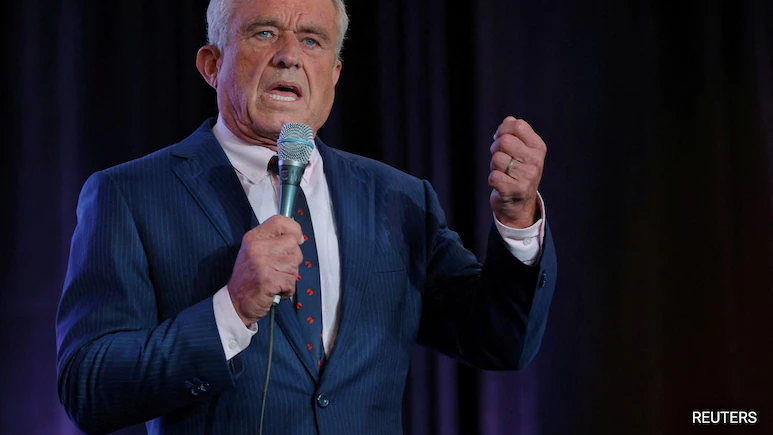For years, employees were told hard work leads to success. Now, many see it leads nowhere. Quiet quitting’s rise is exposing failures in leadership and engagement.
The numbers don’t lie. Studies show that disengagement is rising across industries. The latest Gallup State of the Global Workplace 2024 reports only 23% of employees feel engaged at work, a glaring sign that the problem isn’t laziness, it’s a workplace culture that demands more while offering less.
Instead of going above and beyond, employees are doing exactly what they were hired to do, nothing more, nothing less.
Elaine Do Rosario, AVP and CHRO at the University of Guelph, has spent nearly two decades shaping workplace culture and leadership strategies. With experience spanning both public and private sectors, she understands what it takes to create a workplace that fosters engagement and trust.
For Do Rosario, quiet quitting isn’t just about employees disengaging—it’s a leadership failure.
“The term quiet quitting, that’s really just a new term that just replaces those people that, yeah, five years ago…. they’ve clocked out, disengaged, they’re getting a paycheck,” she says. “I think the only reason the term is more popular now is that there might be a sense that there are more people in that bucket than ever before.”
The shift that fueled disengagement
Do Rosario points to a key turning point: the sudden move to remote work. While tools like Microsoft Teams kept teams connected, they also stripped workplaces of the informal, spontaneous moments that build trust and workplace culture.
“We weren’t seeing each other regularly; we weren’t in the same office space. We weren’t having the same level of hallway conversations we may have had previously,” she says.
“When you’re in the same space, it takes less effort to recognize someone’s work, to check in on how they’re doing. But when you’re remote, everything becomes really formal, and it’s easy for us to forget to—and when I say us, I mean us as leaders—to forget to ask people some of the key questions we need to ask that is not necessarily about the square box of the work that they’re doing.”
It wasn’t just about recognition. It was about the slow erosion of natural, everyday interactions that kept teams aligned.
“You forget the little things—like what Tom said in the last meeting that really riled him up, or the non-verbal cues around the table. You’re trying to fit everything into a 30-minute Zoom call, and those moments get lost,” she says.
At the same time, work-life boundaries became increasingly blurred. Employees, now working from home, felt the pressure to be available at all times, leading to exhaustion and resentment.
“There could be a perception that you’re on all the time, and we forget to draw that line,” she says.
When leadership failed to recognize this shift, employees started drawing the line themselves.
From quiet quitting to leadership failure
To Do Rosario, the real problem isn’t employees doing the bare minimum—it’s leadership failing to keep them engaged.
“The biggest shift in engagement needs to happen at the leadership level, and we cannot assume that every leader in the organization knows how to do that,” she says.
Rather than blanket policies and surface-level engagement initiatives, Do Rosario stresses that leaders need real conversations.
“We need to have better conversations with our teams and our employees. Not to commit to saying whatever the employee comes up with is what we’ll do, but to acknowledge that workload is higher than normal,” Do Rosario says. “It’s about asking: ‘What are things that align with the expectations of what we want, but also with what you’re looking to get out of this experience with this organization?’”
Too often, companies assume disengagement is a work ethic issue, when in reality, it’s a workplace issue. Gallup’s findings suggest that disengaged employees cost the global economy $8.9 trillion in lost productivity, showcasing the financial impact of poor leadership and workplace culture.
Redefining work-life balance
Do Rosario also challenges the idea of work-life balance as a one-size-fits-all concept.
“It’s a very large, broad term, and to be honest, work-life balance for me will look different than work-life balance for [someone else],” she says.
An employee with young children has different needs than a single employee, yet many companies enforce rigid policies that fail to recognize this. The key, she argues, is flexibility and trust.
“I don’t propose that management or leadership have refined plans that are outlined for every single employee in their team,” she says. “However, I do think we have to be more open to flexible work arrangements and having trust that the individual has goals and work that they need to complete and that they are going to meet those deadlines.”
Micromanagement isn’t the answer. Instead, leaders should focus on clear expectations, regular check-ins, and allowing employees to structure their time.
“Clock-watching won’t build a highly productive workforce,” she says. “You don’t get to run into Joe in the coffee room and say, ‘How’s that project going?’ So, I think leaders need to be really clear on when the check-ins are going to be, what the milestones are going to be, and we have to trust that our staff and employees are going to do those things in those time frames.”
Drawing the line between boundaries and disengagement
One of the biggest challenges leaders’ faces is distinguishing between disengagement and employees setting healthy boundaries. The difference? Communication.
“Some people argue quiet quitting is just employees setting boundaries. And in some cases, they’re right,” Do Rosario says. “You have to articulate that you’re an organization that believes in work-life balance and flexible arrangements. Boundary setting doesn’t have to mean going silent.”
Do Rosario wants to see open discussions about workload, expectations and balance—not workplaces where employees feel they have to withdraw to protect themselves.
“We want to talk about what a workday looks like. We want to promote communication, so employees don’t feel they need to be silent and disengaged to be heard,” she says.
For Do Rosario, quiet quitting isn’t the problem—disconnection is. And fixing it isn’t about demanding more from employees. It’s about creating an environment where they feel seen, heard, and valued.
“We have to invest in developing strong leaders,” she says. “If we want to change workplace culture, engagement has to start at the top.”
Employees aren’t asking for less work—they’re asking for leadership that values them. Without that, disengagement is inevitable.






















